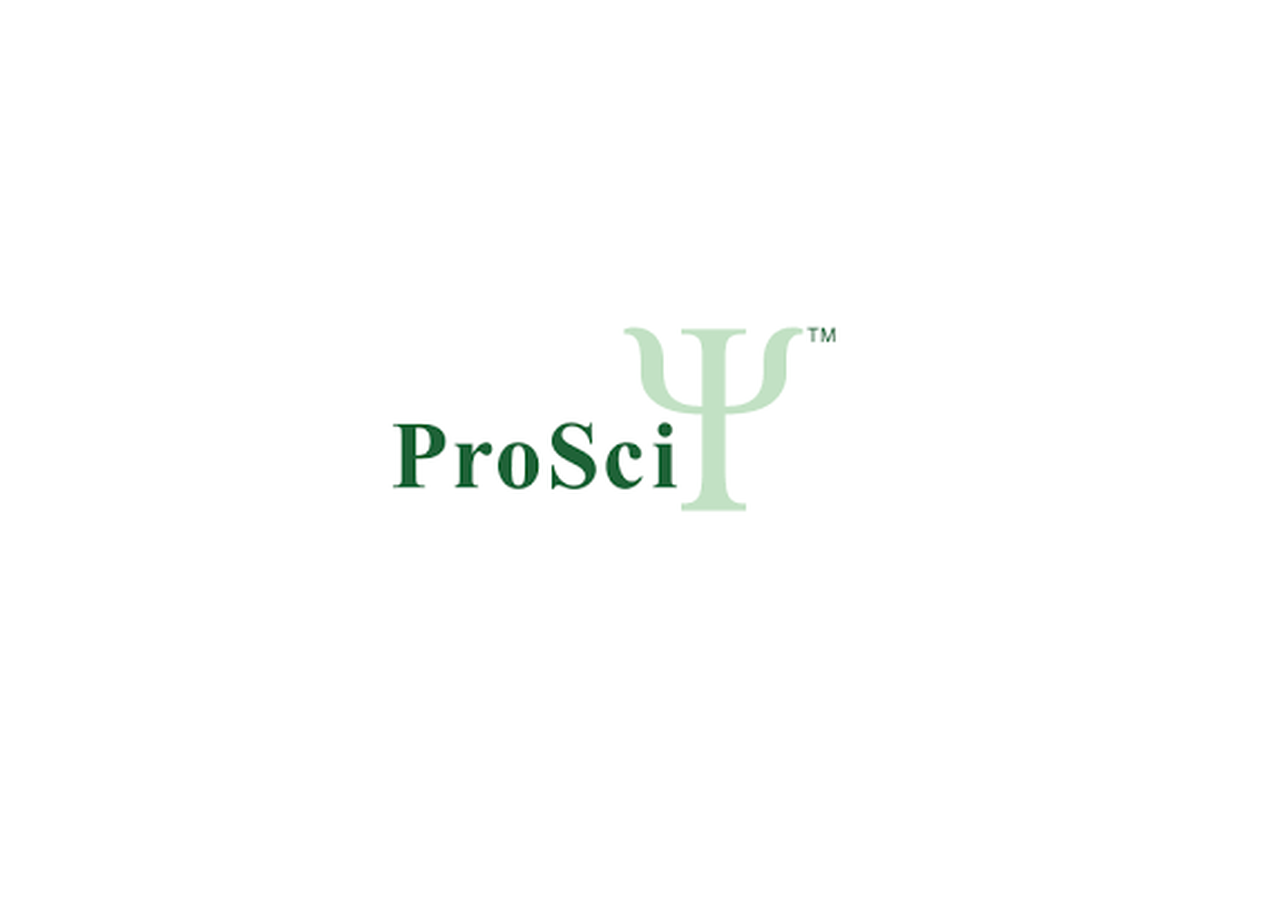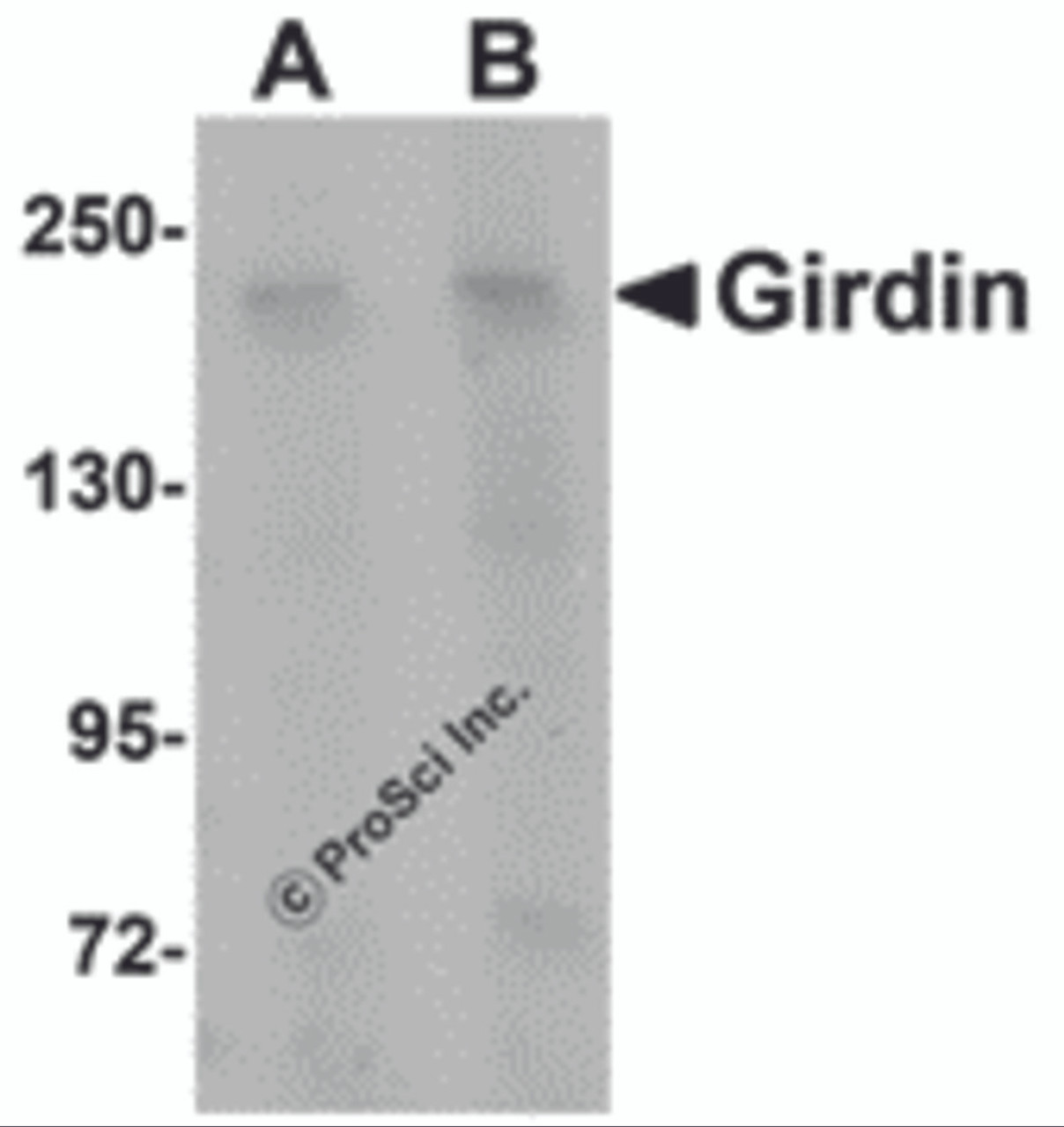Product Description
Girdin Antibody | 5545 | ProSci
Host: Rabbit
Reactivity: Human, Mouse, Rat
Homology: N/A
Immunogen: Girdin antibody was raised against a 16 amino acid synthetic peptide from near the carboxy terminus human Girdin.
The immunogen is located within the last 50 amino acids of Girdin.
Research Area: Neuroscience
Tested Application: E, WB, IF
Application: Girdin antibody can be used for detection of Girdin by Western blot at 1 - 2 μg/mL. For immunofluorescence start at 20 μg/mL.
Antibody validated: Western Blot in rat samples and Immunofluorescence in human samples. All other applications and species not yet tested.
Specificiy: N/A
Positive Control 1: Cat. No. 1463 - Rat Brain Tissue Lysate
Positive Control 2: Cat. No. 10-301 - Human Brain Tissue Slide
Positive Control 3: N/A
Positive Control 4: N/A
Positive Control 5: N/A
Positive Control 6: N/A
Molecular Weight: N/A
Validation: N/A
Isoform: N/A
Purification: Girdin Antibody is affinity chromatography purified via peptide column.
Clonality: Polyclonal
Clone: N/A
Isotype: IgG
Conjugate: Unconjugated
Physical State: Liquid
Buffer: Girdin Antibody is supplied in PBS containing 0.02% sodium azide.
Concentration: 1 mg/mL
Storage Condition: Girdin antibody can be stored at 4˚C for three months and -20˚C, stable for up to one year. As with all antibodies care should be taken to avoid repeated freeze thaw cycles. Antibodies should not be exposed to prolonged high temperatures.
Alternate Name: Girdin Antibody: APE, GIV, GRDN, HkRP1, GIRDIN, KIAA1212, APE, Girdin, Akt phosphorylation enhancer
User Note: Optimal dilutions for each application to be determined by the researcher.
BACKGROUND: Girdin Antibody: Girdin is a Galpha-interacting protein that can enhance the activation of the protein kinase Akt, remodel the actin cytoskeleton, and is thought to be involved in the regulation of cell migration and cancer metastasis. It has recently been shown that Girdin interacts with Disrupted-in-Schizophrenia 1 (DISC1) , a susceptibility gene for major psychiatric disorders. DISC1 is thought to be involved in the migration, positioning and differentiation of dentate granule cells (DGCs) during development; depletion of Girdin or blocking the Girdin-DISC1 interaction results in defects in axonal sprouting in the CA3 region of the hippocampus and overextended migration of mispositioning of DGCs, suggesting the Girdin plays a role in postnatal neurogenesis in the dentate gyrus.
 Euro
Euro
 USD
USD
 British Pound
British Pound
 NULL
NULL










